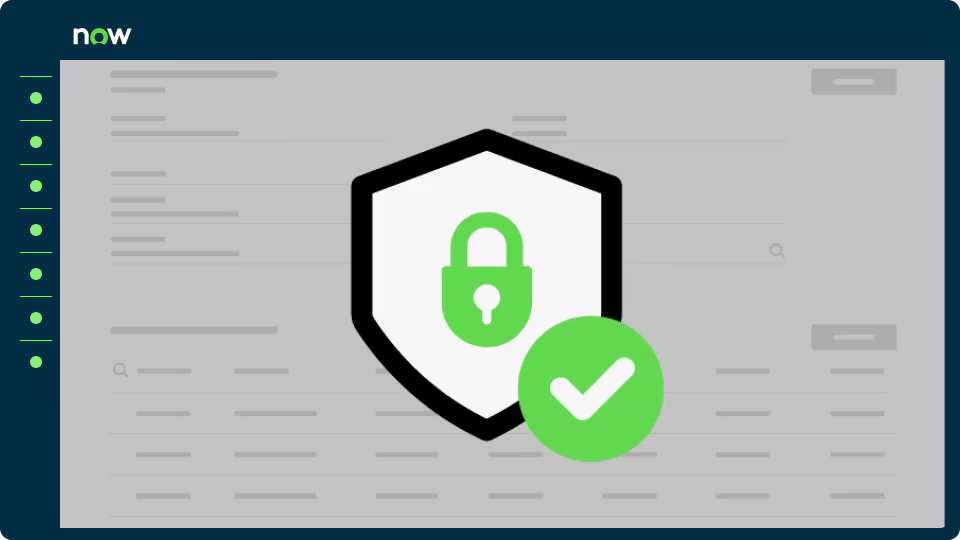In today’s digital era, enterprises heavily rely on ServiceNow to streamline operations, automate workflows, and manage critical business services. With this growing dependency comes an equally crucial responsibility: securing sensitive data and maintaining platform integrity.
As a powerful cloud-based platform, ServiceNow offers robust built-in security features. However, organizations must proactively implement best practices to enhance these safeguards and adapt to evolving threats. Let’s dive into the essential security strategies every ServiceNow administrator, developer, and security team should follow.
1. Implement Role-Based Access Control (RBAC)
Principle of Least Privilege (PoLP) should guide your access management strategy. Assign users only the permissions they need to perform their jobs — nothing more.
- Define clear roles aligned with job functions.
- Use access control rules (ACLs) to protect sensitive records and fields.
- Regularly review and update user permissions to accommodate role changes or employee exits.
Tip: Utilize ServiceNow’s Access Control Lists (ACLs) and Scoped Applications for fine-grained security.
2. Enforce Strong Authentication Mechanisms
Authentication is your first line of defense. To bolster account security:
- Enable Multi-Factor Authentication (MFA) for all users, especially admins and power users.
- Integrate with SSO (Single Sign-On) providers using SAML 2.0 for centralized identity management.
- Enforce strong password policies — minimum length, complexity, expiration intervals.
Tip: Combine ServiceNow’s native authentication options with enterprise-wide Identity and Access Management (IAM) systems.
3. Secure APIs and Integrations
ServiceNow APIs connect the platform with other enterprise tools, but unsecured integrations can become vulnerabilities.
- Use OAuth 2.0 or mutual TLS authentication for secure API connections.
- Restrict API tokens with limited scopes and expiration dates.
- Monitor API traffic for anomalies and unauthorized access attempts.
Tip: Establish a robust API governance policy and limit who can create and manage API integrations.
4. Audit and Monitor Platform Activity
Continuous monitoring is critical for early threat detection and compliance reporting.
- Leverage ServiceNow’s Audit Logs and Security Incident Response applications.
- Set up alerts for suspicious activities such as privilege escalations, mass data exports, or failed login attempts.
- Regularly audit configuration changes, especially in production environments.
Tip: Integrate ServiceNow logs with your SIEM (Security Information and Event Management) solution for centralized monitoring.
5. Data Encryption — At Rest and In Transit
Protecting data requires strong encryption practices:
- Ensure all data is encrypted at rest using ServiceNow’s encryption capabilities.
- Use HTTPS for all connections to ServiceNow instances.
- Consider Edge Encryption for especially sensitive fields or data elements.
Tip: Review ServiceNow’s encryption plugin options, like “Edge Encryption” and “Field Encryption,” to enhance your security model.
6. Conduct Regular Security Reviews and Penetration Tests
Proactive vulnerability assessments can uncover hidden risks before attackers do.
- Perform regular platform security assessments.
- Engage third-party security experts for penetration testing of your ServiceNow instance.
- Patch and update your ServiceNow version regularly to incorporate the latest security fixes.
Tip: ServiceNow releases security advisories — make sure your teams are subscribed and responsive to them.
7. Train Your Users
Even the most secure platform can be compromised by user error. Continuous education is key:
- Provide security training for developers, administrators, and end-users.
- Share best practices for data handling, password management, and recognizing phishing attempts.
- Foster a security-first culture across your organization.
Tip: Include ServiceNow-specific security awareness sessions as part of your onboarding process for new employees.
Conclusion
Protecting your ServiceNow environment isn’t just a technical task — it’s a comprehensive, ongoing strategy. By adopting these best practices, organizations can safeguard sensitive information, maintain platform integrity, and strengthen overall resilience against cyber threats.
Security must be woven into every phase of your ServiceNow lifecycle — from design and development to deployment and daily operations. In the ever-evolving threat landscape, staying proactive, vigilant, and informed is the ultimate defense.


